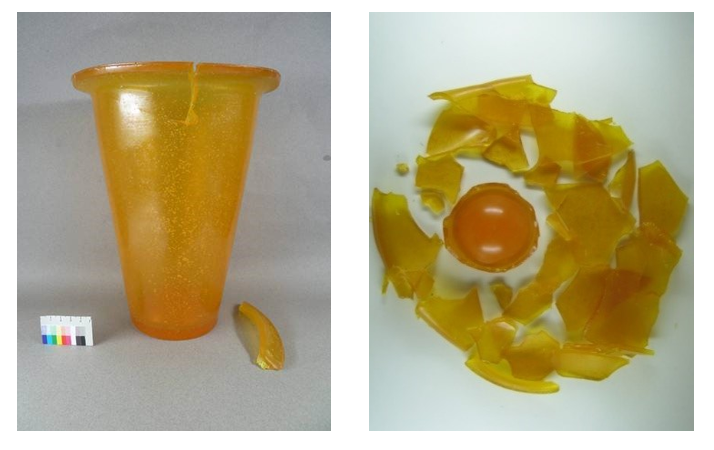
This project is part of the Research Programme 20th-century Heritage carried out by the Cultural Heritage Agency of the Netherlands (RCE).
This project is developing tools for the management, conservation and restoration of plastics in modern and contemporary art and design collections. All modern and contemporary art and design collections have large numbers of objects made from plastics. As plastics are generally not meant to last forever, their management and preservation pose a problem for Dutch museums. This is especially true when artists used them in ways other than ‘intended’, resulting in damage and degradation that can significantly shorten the lifespan. After the successful ‘Collection knowledge 2.0 – Plastics’ project concluded in 2019, several urgent new research questions arose. For example, what can be done to prevent deterioration of elastomers? This is happening faster than expected. Too little is known about 3D-printed objects. For instance, how do we clean them without risk of damage? There are also plastics that give off odours when new or with age. What is it we’re smelling, and is there a risk to employees, visitors and/or other objects in the vicinity? In this Plastics follow-up project, the RCE is investigating these questions.
Collaboration
The RCE is conducting this project in collaboration with a range of modern and contemporary art and design museums.
Results of four subprojects
- Prognosis of polyurethane (and other) elastomer and 3D-printed object degradation
- Preventive and other conservation measures for elastomers and 3D-printed objects
- Information on the potential harms of ‘smelly plastics’ to employees and/or nearby objects
- Restoration methods for heritage objects made from plastic. For example: techniques to reverse yellowing in plastics, research into surface cleaning with ozone water instead of solvents and soaps
Example (see images above)
‘Soft Vase’, polyurethane elastomer, Hella Jongerius, 1999, RCE Study Collection
(Left) 2011, showing a crack, no signs of degradation (right) 2014, degraded into fragments.
On visits to museum repositories, the RCE encountered objects by Hella Jongerius made from the same material that were in the same condition as the ‘Soft Vase’ pictured. The RCE hopes the results of this research can be used to prevent the loss of all polyurethane elastomer objects in museum collections.